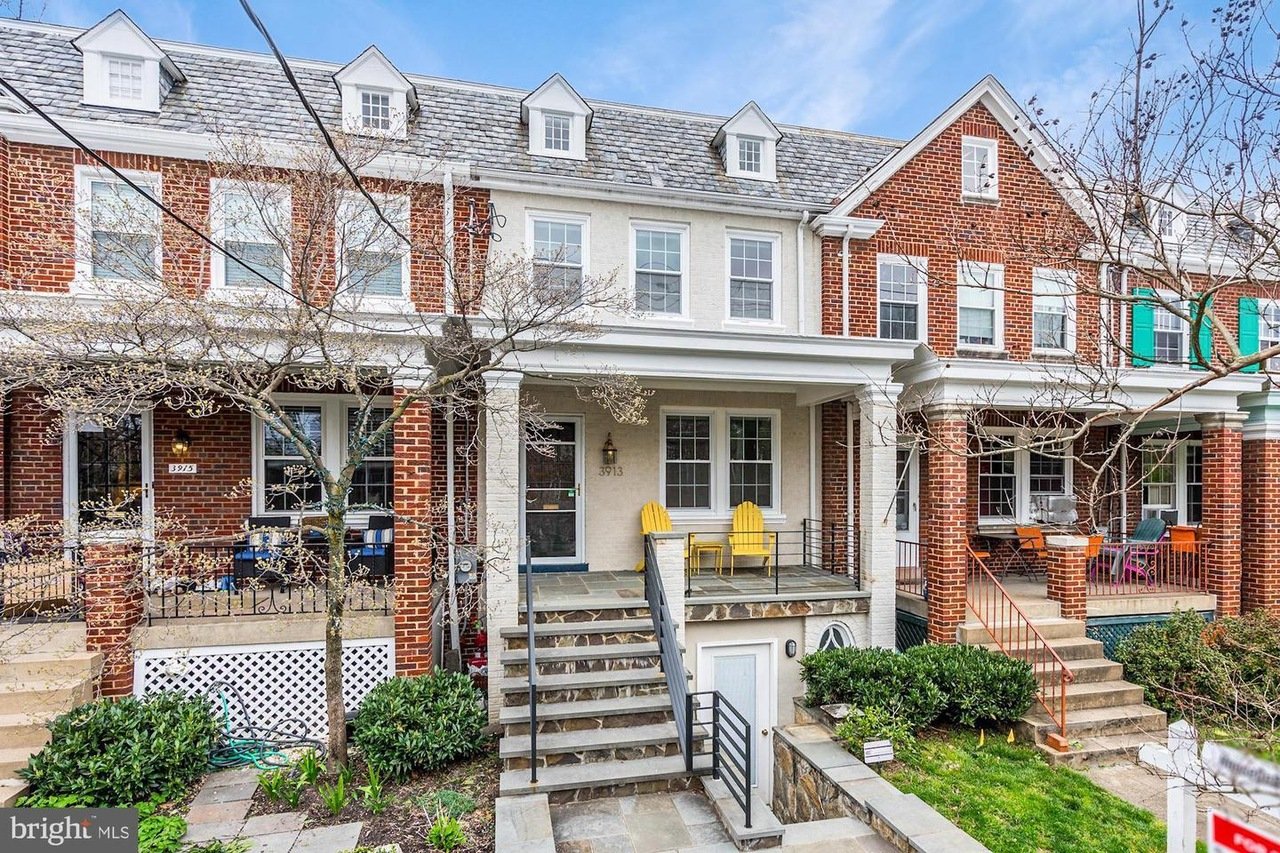Dr. Elijia and Louis Fidel were happy with the size and location of their townhouse, shaded by oak trees on a tiny Arlington street. But they wanted an interior that mirrored their artistic bent. Elijia, a dentist, was raised amid Brazil’s flourishing art scene. Louis, an IT project manager from Baltimore, wanted to use dramatic color to showcase their art.
Designer Shane Castillini Sjtorm made the most of the home’s nearly floor-to-ceiling windows. Sjtorm, of the Arlington-based Sjtorm & Theory design duo, left the windows undraped and painted the frames bright white for a dramatic contrast with the deep, dark hues on the walls.
The Fidels were particular about colors, so Sjtorm ordered 18-by-24-inch paint chips. Bigger chips are one technique paint companies now use to give shoppers a better idea of true colors. Some lines, like Sherwin-Williams, also provide pots of paint that can cover several feet. Benjamin Moore and others offer Web-based programs and, for a small fee, CDs that allow users to paste in photos to preview the colors in their room.
Sjtorm repainted the Fidels’ ceilings, which had come in “builder’s” flat white, with Benjamin Moore Sail Cloth, which has a touch of brown. “Painting the ceiling basic white is the norm, yet I rarely do it,” Sjtorm says. “A white ceiling is cold. Especially with higher ceilings, it is nice to feel enveloped by the four walls, ceiling, and floor.”
A glass-topped dining table and pierced-backed chairs allow unimpeded views, keeping the dark room light. A shell chandelier gives the room luminescence while balancing the sharp lines of the furniture.
Recessed lamps create pools of light on the wood floors, the corners of chairs and the table, and the artwork. Some 40 recessed lights installed throughout the house cost $15,000, and Sjtorm says the expense is worth it. “Most homes I see are improperly lit. Illumination should exist on all levels—table candelabras, reading lamps, and hanging chandeliers.”
Art often shows best against a light, neutral background, but the steely blue-gray Saville Row in the living room is the perfect backdrop for the Fidels’ abstract painting. As in the dining room, the furniture’s open frames create an airy effect.
Sources
Paint: Living-room walls: Saville Row by C2. Dining-room walls: Mink by Benjamin Moore. Both ceilings: Sail Cloth by Benjamin Moore.
Dining table and chairs: Bloom dining table and Cezanne dining chairs from Artefacto, Georgetown; 202-338-3337; artefacto.com. Around $10,000.
Shell chandelier: Theodore’s, Northwest DC; 202-333-2300; theodores.com. Around $2,500.
Recessed lighting: Illuminations, Georgetown, 202-965-4888, and Penn Quarter, 202-783-4888; illuminc.com.
Coffee table: Kron table from Moura Starr, New York; 212-219-1110; mourastarr.com. $6,000.
Sofa: Quadra sofa from Poltrona Frau, Georgetown; 202-333-1166; poltronafrau.it. Around $11,000.
Vintage living-room chairs: from ABC Carpet & Home, New York; 212-473-3000; abchome.com. $1,800 for the pair.
Living-room rug: from Timothy Paul, Northwest DC; 202-319-1100; timothypaulcarpets.com. Around $9,000.
Art above sofa: by Peter Fox, represented by Knew Gallery in Georgetown; 202-338-4588; knewgallery.com.
Interior design: Shane Castillini Sjtorm, Sjtorm & Theory; 703-527-3432; sjtormandtheory.com.
Once you’ve narrowed down to a few paint colors, designer Shane Sjtorm recommends having those colors put on new 18-by-24-inch paint chips—they cost about $6. He suggests moving them around on the walls to get a sense of how the color will work in a room. He says pots of paint that cover a two-by-two-foot area are even better because painting the wall gives a truer color. Not ready to paint patches on the walls? Put the paint on a scrap of drywall.

















